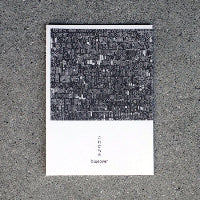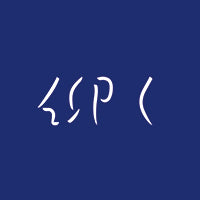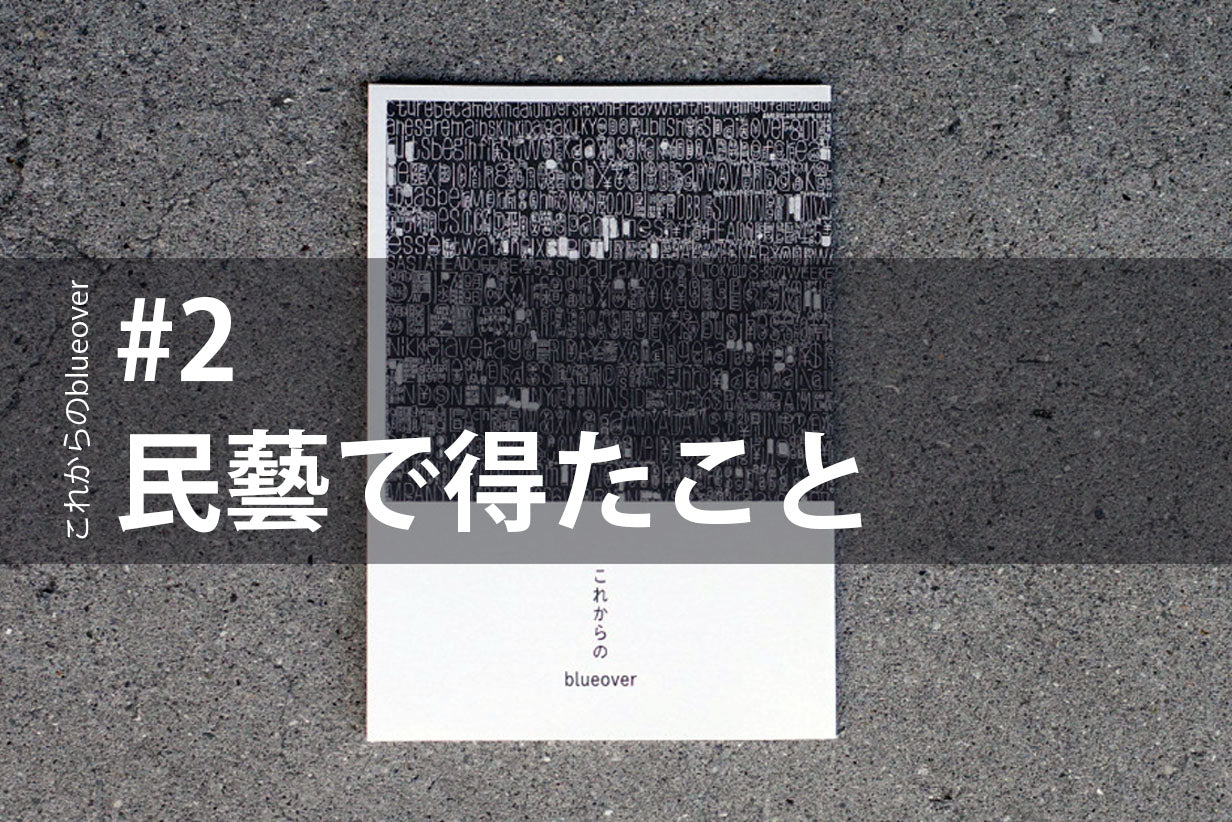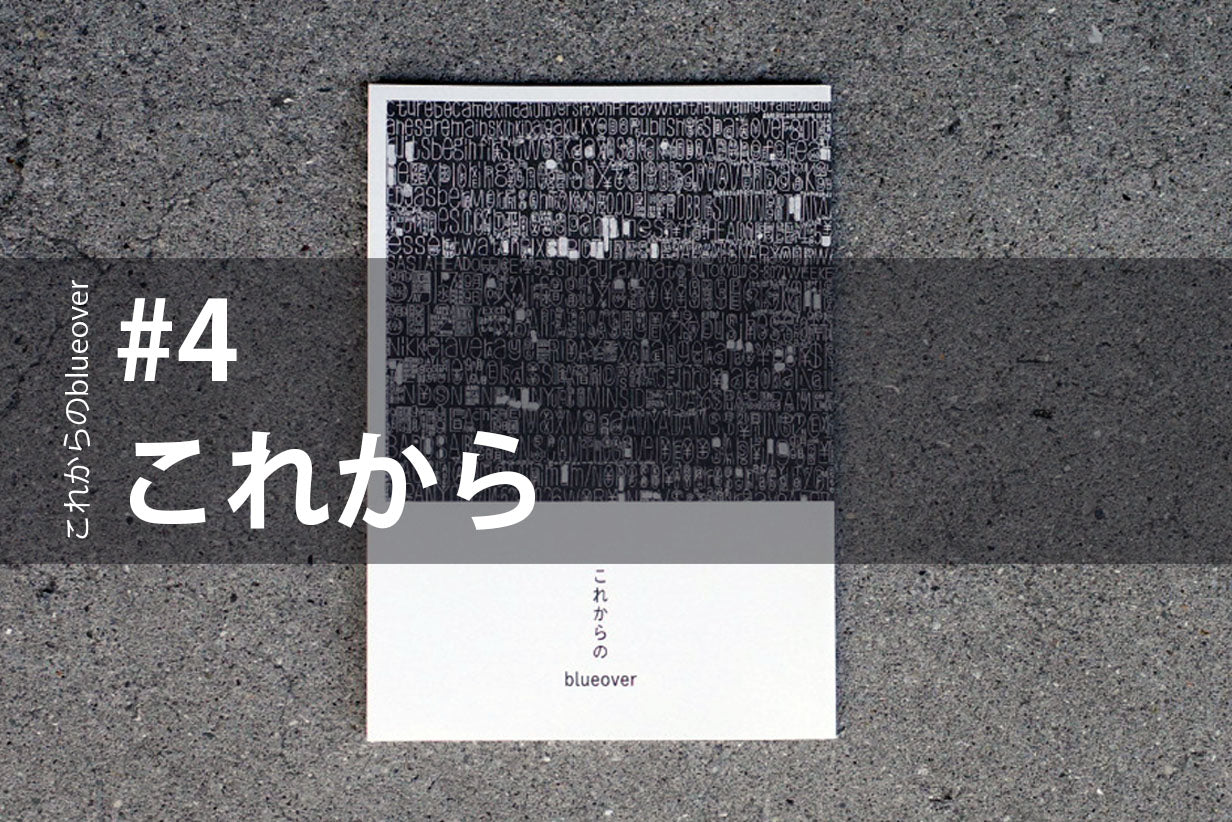Future BLUEOVER #03 | Outsider Art
What is called outsider art
When explaining ``mushin,'' I need to tell you another story. One day, I learned about a man named Henry Darger . His life was very interesting, and over the course of several decades he left behind 15,000 pages of work, but this work remained unpublished until the end of his life. He is a famous writer, so you can find out a lot of his stories by searching.) The fact that he continued to create such a huge amount of work without showing it to anyone. His life was too shocking for me.
When I work as a designer, I produce results in response to requests from clients and receive compensation as compensation. There is a client, we conduct research for a purpose, and we think about what the answer is. I never doubted that this relationship was completely normal when designing. But he wasn't like that. He continued to produce works without being asked to do so by simply pouring out the world he drew, an unusual amount of it, as a daily occurrence. It was an act I could never imagine. And creativity that is not dominated by academia will attract many people. Naturally, there will be evaluations based on knowing his upbringing and background, and I can't deny that I myself have that view. Having said that, I would like to say that I was shocked by his work. That pure, unadulterated energy shocked my heart. That's where I came to know the term outsider art.
As the word suggests, outsider art is defined as something that is outside the realm of art. For example, works that do not have a general art education (Art Brut), and works of art that have been handed down from generation to generation (Folk Art). I understand that it is placed in relation to works that do not belong to so-called fine art.
I have always been aware that people's intentions must intervene in things and events, and I have a habit of unconsciously trying to decipher actions. I guess you won't be convinced unless you find some kind of logic. I think it's probably like an occupational disease that I've lived with as a designer. I understand that such an approach is extremely beneficial for economic activities, and I don't think it's a bad thing. This is because problems can be solved by communicating with each other and reading what the other person is thinking. In order to build smooth relationships, many people probably try to understand someone's intentions, whether consciously or unconsciously.
However, as these habits became commonplace, the emotional turmoil that I used to feel began to fade, and I started doing them less frequently. This may be the result of the sense of security that comes from being governed by the orderliness and rules of social activities. The act of avoiding friction as you adapt to society as a way for both parties to continue to work efficiently and without stress. That's the way I see it. However, wouldn't this kind of behavior actually mean that we no longer see what was once visible?
As the number of rational judgments based on experience increases, things that cannot be explained are "excluded" from thinking. The mindless beauty of folk art, which I mentioned earlier, is judged as something that cannot be explained well when framed from the perspective of social rationality, and a true understanding cannot be reached. I myself was in that mindset. However, I have come to believe that the things that are difficult to explain are the sources of emotional tremors that have diminished with experience and age.
The Henry Darger episode provided an opportunity for me to realize this. Outsider art is too broadly defined. However, I strangely feel sympathy for many of the things that belong to this category called outsider art. And I think Mingei also falls into this interesting category. There's definitely something there that touches my heart. I can't explain it one by one. That's because I don't have a clear answer right now. However, although I don't have a clear answer, I can give you a vague answer. What touches my heart is the imagination (creativity) that people create that cannot be explained by rationality alone. And that it is connected to mushin. I can't help but feel that this is a hint to the vision of the brand that we will arrive at in the future, starting from Mingei.
I was really surprised when I learned about outsider art. There are many people in Japan who belong to outsider art, but what gave me the opportunity to learn more about it was the world called disability art ( atelier incurve 's Hiroyuki Imanaka disagrees with this categorization). Although it is said that there is, it is used for explaining the background). By the way, I'm not very familiar with the art world. To begin with, I didn't know the context of art and had little interest in it (now I have a lot of interest in it). One day, the amateur was shown a work by Yoshiyasu Hirano by a staff member at his company. It's truly amazing. Until now, I was not allowed to even try to understand his works, which hindered my habit of trying to find logic and understand them. His works are filled with letters so densely spread across the surface that they make no sense as words. However, the letters and words that are laid out all over the place have their own unique rules, and they form a cohesive structure. And Mr. Hirano, who creates it, never stops producing his work every day. It's a mindless act that is repeated forever. My emotions were shaken and I even felt a kind of relief. I felt like my sense of values, which I had always understood logically and continued to have a sense of security about, had been completely torn apart. As I looked at the works of other artists who were interested in art by people with disabilities, I was amazed at their creativity. And I realized that things that easily exceed my imagination can unfold so naturally. shaking. I learned that there are many realms in their world that I, as a designer, would never be able to reach.
A feeling of resignation welled up inside me.
change glasses
I'm over 40 years old. I am aware that I am an elderly person myself. Confucius said, ``Even though I am forty, I am not confused'', but I still do not know what I am. My friends and I talked about it being a middle-age crisis. I continued to chase after my ideal image. ``I'm sure there must be an answer,'' he said, searching hard for himself. However, the more I chased and tried to find those feelings, the more they became hazy. However, through his understanding of the ``mindless beauty'' of folk art, and through outsider art and art by people with disabilities, he realized that the goal he was aiming for was impossible for him to achieve on his own. That's a state you can't reach as long as you have selfishness. It may be a strange thing to say, but the feeling of giving up made me feel like the ``desires'' I had been trying to pursue were removed, and I felt at ease.
I had become a strange adult, acting as if I had learned about the business world, labeling various events as if this was the correct answer, and before I knew it, I began to look bored. It might have been. In his book ``How to Draw Living Things,'' naturalist Mitsuru Moriguchi says, ``The trick to observing nature can be expressed as ``wearing glasses to see nature.'' Nature is always there, but... This is because you don't usually see it.'' The glasses I'm talking about here are not glasses as a tool, but the person's point of view, and I think this is exactly the situation I'm in right now. I guess because I kept wearing business glasses, I could no longer see things from that perspective. However, by changing your glasses, a completely different world will appear. This was a way of thinking that freed me from business competition and gave me many hints for how to not get lost in my 40s by looking at things from a different perspective.
My past self has the facts of that time. Looking back now, I'm embarrassed to know what I was thinking at the time, but my feelings were true. It made me feel hot. The younger you are, the stronger and more irrational your reasons are.
This feeling disappeared as I grew older. However, after what I have learned so far, I now believe that this energy is important. I hear the analogy, ``A musician's first album is the best.'' To put it bluntly, it's probably because that first photo represents the purest and most innocent feelings untainted by anything. The audience is touched and moved by this. I feel like I understand. Of course, there is no basis for this, and there is no doubt that artists put their full effort into each work they create. However, I think there is no doubt that the first album is very memorable for him as well. That's probably why it's packed with energy. Personally, I always feel nervous and excited when experiencing something for the first time in my life. Therefore, it can be understood that a memorable memory is an experience. This is my first attempt, and I believe that a certain kind of ``no-mind'' exists.
I realized that the reason why I was feeling less anxious was because I had kept my business glasses on. At the same time, I overlooked the fact that there is an energy that comes from youth and opportunities such as challenges. What I'm trying to say here is that I keep wearing the same glasses, and before I know it, I keep having a biased view of things, and as a result, I have boring eyes. And by changing his glasses, he was able to notice something important that he had overlooked before. This gave me a hint for my future lifestyle.
I said that I felt lighter after giving up. It can also be said to be a release from the act of creating things in a mindless state, from trying to do it with obsession. It's hard to convey, but it doesn't mean you stop walking, it means you stop forcing yourself to shape yourself. Being able to remove that obsession really made me feel lighter. And I would like to think that I am now able to think about what I want to do from a more meta perspective.




